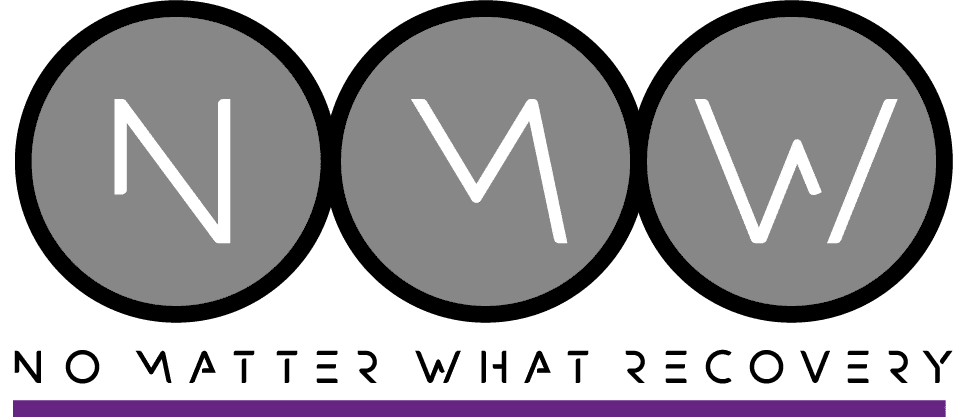The term “california sober” has gained significant attention in recent years, however, this trendy approach to recovery presents serious concerns for individuals with substance use disorders and fundamentally contradicts what it means to be sober.
What Is California Sober?
The California sober lifestyle typically refers to abstaining from “harder” addictive drugs like alcohol, cocaine, heroin, crystal methamphetamine, or opioids while continuing to use cannabis-based products or other substances perceived as “less harmful.” Some variations of this semi-sobriety approach include moderate alcohol consumption alongside cannabis use, or the incorporation of psychedelic drugs like psilocybin mushrooms into one’s lifestyle.
The appeal of this approach is understandable – it seems like a middle ground between active addiction and complete sobriety. For many people struggling with addiction, the idea of never using any mind-altering substance again can feel overwhelming and impossible.
The Fundamental Problem: You’re Not Actually Sober
The most significant issue with california sober is right there in the name – it’s not actually sobriety. Sobriety, by definition, means abstaining from all mood-altering substances. When someone continues using marijuana, alcohol, or other substances, they’re not sober; they’re simply switching addictions or maintaining a substance use pattern.
As Dr. Akhil Anand, a psychiatrist and addiction specialist, explains: “The term is ambiguous and kind of a misnomer. After all, you’re not sober if you’re still using mind-altering substances.”
The Science Behind Why California Sober Doesn’t Work
Cannabis Dependence and Cannabis Use Disorder Are Real
One of the biggest misconceptions about the California sober lifestyle is that marijuana and cannabis-based products are harmless and non-addictive. Research from the National Institute on Drug Abuse (NIDA) shows that studies have estimated 22% to 30% of people who use cannabis develop cannabis use disorder, with research suggesting that between 9 and 30 percent of those who use marijuana may develop some degree of marijuana use disorder.
Modern cannabis products have significantly higher THC concentrations than in previous decades, increasing the risk of dependence. Whether consumed through vape pens, edibles, pre-roll joints, dabbing, or tinctures, these products can lead to cannabis dependence and serious withdrawal symptoms when discontinued. Those using personal pipes, one-hitters, or visiting dispensaries regularly may not realize they’re developing tolerance and dependence.
For those who began using before age 18, the risks are even higher. People who begin using marijuana before age 18 are four to seven times more likely than adults to develop a marijuana use disorder, and research shows people who begin using marijuana regularly before age 18 are four to seven times more likely to develop cannabis use disorder than people who start using as adults.
Cannabis Doesn’t Work as a Substitute
Research specifically examining cannabis as a substitute for other substances shows concerning results. A study published in PubMed found that “cannabis does not appear to work as a substitute for alcohol or other drugs” because “cannabis use is related to increased risk of alcohol and other drug use and problems” among individuals in recovery settings.
This contradicts the harm reduction premise of california sober and suggests that continued cannabis use may actually increase the likelihood of returning to other substances.
Why People Are Attracted to California Sober
The california sober trend gained momentum partly due to changing attitudes toward marijuana and a desire for harm reduction approaches. Many people believe they can maintain control over their substance use by limiting themselves to “less harmful” options.
Additionally, some individuals struggle with the all-or-nothing approach of traditional sobriety. The idea of never using any substance again can feel daunting, making california sober seem like a more manageable compromise. For those dealing with trauma or mental health conditions, the thought of giving up all coping mechanisms simultaneously can be particularly challenging.
The Risks of California Sober for People in Recovery
Addiction Transfer and Cross-Addiction
Addiction medicine specialists recognize that individuals with substance use disorders face significant risks of addiction transfer when using any mood-altering substances. Cannabis dependence can develop independently, and research shows that marijuana use can impair motor coordination, affect reaction times, and contribute to mood disorders including anxiety and depression.
The brain chemistry changes that occur during addiction don’t reset simply because someone switches substances. Whether the addiction initially involved alcohol use disorder, opioid use disorder, or other substance dependencies, the underlying disease remains active when any addictive drugs are consumed.
The brain’s reward system doesn’t discriminate between substances. Whether it’s alcohol, cocaine, or marijuana, these substances all affect the same neural pathways that were dysregulated during active addiction.
Increased Health Risks
Living California Sober may seem safer than active addiction, but continued substance use carries significant health risks. Cannabis use has been linked to cardiovascular disease, liver disease, and increased cancer risks. For individuals with co-occurring mood disorders or those at risk for conditions like psychosis or schizophrenia, marijuana use can exacerbate symptoms and interfere with proper treatment.
Impaired Judgment and Decision-Making
Continued substance use, even marijuana, can impair judgment, motor coordination, and decision-making abilities. Studies show that cannabis affects reaction times and cognitive function, which can make it easier to rationalize using other substances or increasing usage over time. Many people in recovery report that their relapse began with seemingly “safe” substances before escalating to their drug of choice.
Lack of True Recovery Work
True recovery involves more than just stopping substance use – it requires developing healthy coping mechanisms, addressing underlying trauma, and building a fulfilling life without chemical dependency. When someone continues using substances, they may avoid doing the deeper work necessary for lasting recovery.
California Sober and Vulnerable Populations
LGBTQ+ Community Considerations
The LGBTQ+ community faces unique challenges in recovery, including higher rates of substance use and specific cultural factors around party culture and substance use. California sober can be particularly risky for LGBTQ+ individuals who may already face additional stressors and have used substances to cope with internalized homophobia or discrimination.
The community’s relationship with substances like poppers and the prevalence of chemsex make the california sober approach especially problematic, as it doesn’t address the underlying patterns of substance use for coping and social connection. Many individuals may turn to medical cannabis, magic mushrooms, or other substances thinking they’re making safer choices, but this can lead to new dependencies.
Young Adults and Developing Brains
Young adults are particularly vulnerable to the risks of california sober. According to NIDA data, marijuana use among adults 19 to 30 reached historic highs, with approximately 44% reporting past-year use in 2022. For developing brains, any continued substance use can have lasting effects on cognitive function and emotional regulation, potentially contributing to neonatal opioid withdrawal syndrome in pregnant individuals and affecting long-term brain development.
What Actually Works: Evidence-Based Recovery
Complete Abstinence and Professional Treatment
Research consistently shows that abstinence-based approaches provide the best outcomes for individuals with substance use disorders. While this approach may seem more difficult initially, it allows the brain to heal and individuals to develop genuine coping skills without chemical interference.
Comprehensive Treatment Approaches
Effective addiction treatment typically includes multiple components working together. Intensive outpatient programs provide structured support while allowing individuals to maintain their daily responsibilities. Dual diagnosis treatment addresses both addiction and underlying mental health conditions simultaneously, often including detox services when needed.
Evidence-based therapies like cognitive behavioral therapy (CBT), also known as cognitive-behavioural therapy, dialectical behavior therapy (DBT), and EMDR therapy help individuals develop healthy coping mechanisms and process underlying trauma. Licensed therapists specializing in addiction recovery can provide therapeutic use of evidence-based interventions.
Medication-Assisted Treatment and Medical Support
For some individuals, medication-assisted treatment can be an effective component of recovery. Unlike california sober, which involves using potentially addictive drugs, MAT uses FDA-approved medications like naltrexone that help reduce cravings and prevent relapse without producing a high. Treatment centers may also provide naloxone for overdose prevention, particularly important for those with opioid use disorder histories.
Medical supervision during detox ensures safety and proper management of withdrawal symptoms, whether from alcohol, opioids, meth, or other substances. Some facilities offer specialized programs like fentanyl detox treatment for individuals with complex addiction histories.
The Importance of Professional Guidance
Anyone considering their relationship with substances should work with qualified professionals in addiction medicine and psychiatry. Individual therapy with licensed therapists can help people understand their patterns of use and develop personalized strategies for addiction recovery. Group therapy provides peer support and accountability from others facing similar challenges in recovery circles.
Support groups offer crucial peer groups and boundaries that help maintain sobriety. Unlike approaches that allow some substance use, abstinence-based support groups provide clear guidelines and community accountability.
For families affected by addiction, family therapy can help address the complex dynamics and family roles in addiction while supporting the recovery process.
Moving Beyond California Sober
Addressing Underlying Mental Health and Medical Issues
True addiction recovery requires addressing the underlying factors that contributed to substance use in the first place. This might include trauma, mood disorders, or learned coping patterns. Trauma therapy can be essential for individuals whose substance use began as a way to cope with difficult experiences.
Many individuals in recovery also benefit from aftercare programs that provide ongoing addiction support. Working with a longevity doctor or medical professional who understands both addiction and overall health can help address physical complications that may have resulted from previous substance use, including liver disease, heart disease, or cardiovascular disease risks.
Building a Support Network
Recovery is not a solitary journey. Building connections with others who understand the challenges of sobriety can provide crucial support during difficult times. While california sober might seem easier initially, it often prevents individuals from fully engaging with recovery communities and support systems.
Developing Healthy Coping Mechanisms
Instead of relying on any substance, even medical cannabis or psilocybin, individuals in addiction recovery benefit from developing healthy ways to manage stress, emotions, and life challenges. This might include mindfulness practices, physical exercise, creative pursuits, or spiritual practices that don’t involve psychedelic drugs or other substances.
Some people may consider approaches like Moderation Management, but for those with true addiction, complete abstinence remains the gold standard. Drug rehab programs focus on building these essential life skills without chemical dependency.
The Role of Sober Living and Aftercare
Sober living environments provide structure and accountability during early recovery. These environments typically require complete abstinence from all substances, including marijuana, creating a supportive atmosphere for genuine sobriety. Understanding sober living requirements can help individuals make informed decisions about their recovery environment.
Comprehensive aftercare programs help reduce relapse risk through ongoing addiction support, peer groups, and continued therapeutic interventions. This ongoing support is crucial for maintaining abstinence-based recovery and preventing drug relapse.
True Sobriety Offers Real Freedom
While california sober might seem like an appealing compromise, it ultimately keeps individuals trapped in cycles of chemical dependency. True sobriety – complete abstinence from all mood-altering substances – offers genuine freedom from addiction and the opportunity to develop authentic coping skills and emotional resilience.
If you or someone you love is struggling with addiction, professional help is available. Real recovery is possible, and it starts with honest acknowledgment that half-measures like california sober simply aren’t enough to break free from the cycle of addiction.
If you’re struggling with substance use or considering your options for recovery, reach out to No Matter what Recovery for personalized guidance and evidence-based treatment options.

Mell McCracken, CADC-II, ASAT, RAE
Mell McCracken is the Executive Director of No Matter What Recovery, serving as the leader of the clinical treatment program and overseeing our sexualized drug use curriculum.
Mell is nationally and internationally recognized as an LGBT+ educator, co-author, and treatment provider. They also serve as faculty member at the International Institute of Trauma and Addiction Specialists. They are committed to uplifting voices and breaking stigmas, one conversation at a time, and have spent their career fighting for inclusivity and empowerment through chemsex education and LGBT+ activism.







